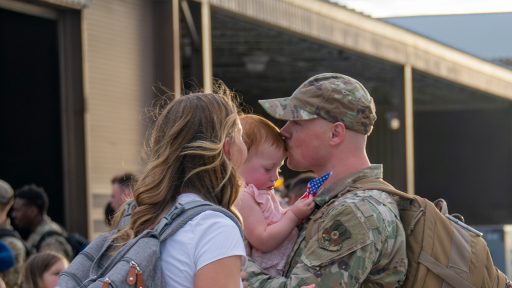Talking with your children about healthy body boundaries from an early age is an important part of parenting. The earlier you start — and the more you reinforce the message — the better. Read on for specific conversations to have with younger children and preteens.
Military OneSource also provides guidance to help you support your teen in developing and maintaining healthy relationships and staying safe.
Talk with your child
Have casual conversations with your child as part of your normal routine. Chat with them when they have a question or comment that tells you they may need to talk. Keep your talks simple and make sure they know that they can always come to you with questions.
Other points to consider when discussing healthy body boundaries include:
- Naming body parts accurately: Teach your children from an early age the proper names for their body parts, including the ones covered by their swimsuits. As they get older, you can explain the importance of keeping private body parts private.
- Teaching children to ask permission: Children need to be taught to ask for parental permission before spending unsupervised time with another person, regardless of whether or not they know the person.
- Learning body autonomy: Instill in your children the knowledge that their bodies are private, belong to them and deserve to be respected and protected. They need to know that they have the right to say “no” to anyone — even an adult, and even if it is a relative or someone else they like and trust.
- Respecting “no”: For children to have confidence that “no” has meaning, it’s important that all members of your family have the same understanding: “No” will always be respected, even when no harm is intended.
- Understanding body safety: When a child reaches about age 5, they can begin to understand different types of physical interactions. Explain and provide examples of touching that makes them feel warm, secure and loved. Hugs and high-fives are examples of good touches that kids are typically exposed to.
- Establish boundaries for devices with cameras: Let your children know that it isn’t OK for them or anyone else to take pictures of their or others’ private parts. As they mature, let them know why this is so important. Let them know that their private image will no longer be private and that they cannot retrieve an image once it’s been texted or posted to the internet.
- Staying safe online: Talk to your children about internet safety. Help them understand what makes for an inappropriate and/or dangerous exchange and that they should never participate in such activities. Educate yourself about the various online platforms popular among young people, establish guidelines and find ways to monitor their online activities.
Empower your child
Help your school-age children protect themselves by trusting their instincts, being assertive and taking prompt and decisive action in the following areas:
- Tell them to trust their feelings, and that if something doesn’t feel right, it probably isn’t.
- Coach them to forcefully say, “I don’t like that” or “Stop touching me.”
- Tell them that if they feel uncomfortable or confused, or dislike the way someone approaches, touches or interacts with them, that they should get away as soon as possible.
- Tell them to inform you right away if something feels wrong. And that if you aren’t available, that they should tell another trusted adult willing to take any action that is needed.
- Assure them that you can handle anything they tell you — and that you will always listen to them, believe them and take appropriate action.
Teaching your children about healthy body boundaries allows you to practice some rules for safe touches with them.
Teach and practice the “What if?” game
Have your child practice responding to dangerous situations with a question-and-answer game called “What if?” Here’s how to play:
- Start by providing your children with some age-appropriate questions and make sure they understand the correct answers, the thinking behind them and why they are important. Remember that younger children require simple explanations.
- Next, ask your children the questions and wait for them to respond. Calmly supply the correct answer if they forget any part of it.
Play the game often — in a low-pressure manner — until your children learn the answers without you prompting them. Here are a few “What if?” questions to start with:
- What if someone — even someone you know — touches you in a way you don’t like?
- What if a grown-up — even one you know — touches you in a way that makes you feel uncomfortable, even if it is just a hug?
- What if someone offers you something you really want, such as candy or a toy, to keep their touching a secret?
- What if someone says that they will hurt you or someone you love if you tell on them?
- What if someone is bothering you at school or in the neighborhood and another trusted adult is not around?
- What if someone you tell doesn’t believe you or gets mad at you?
- What if an adult says or does something to you that you think is wrong and then tells you it was your fault?
- What if someone tells you that your parents will blame you, punish you or not believe you?
Start having these discussions with your children as soon as it is practical. And remember that you can reach out to your Family Advocacy Program for information, supportive counseling or specialized resources to assist you, your child or your family.










